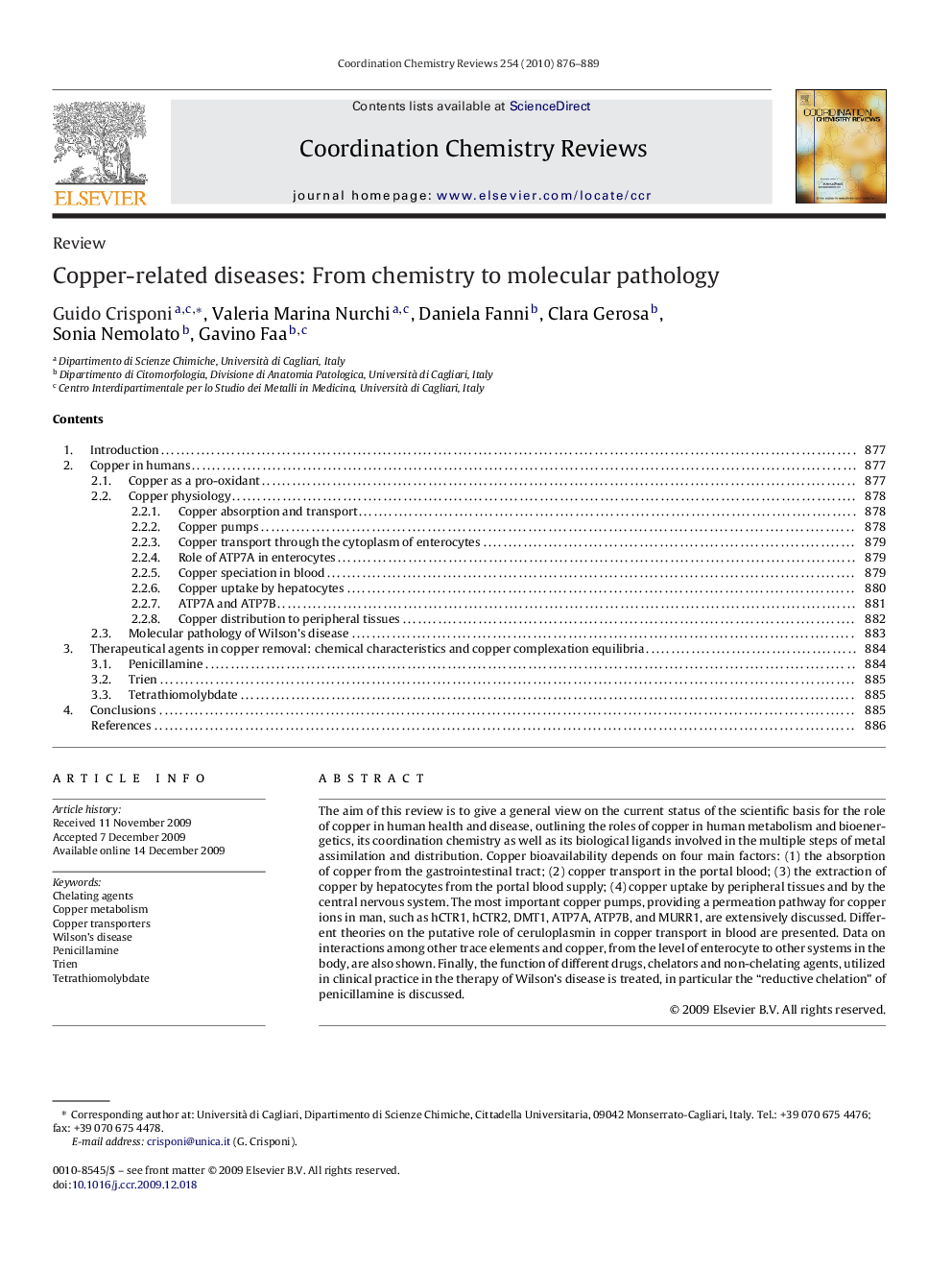| Article ID | Journal | Published Year | Pages | File Type |
|---|---|---|---|---|
| 1301184 | Coordination Chemistry Reviews | 2010 | 14 Pages |
The aim of this review is to give a general view on the current status of the scientific basis for the role of copper in human health and disease, outlining the roles of copper in human metabolism and bioenergetics, its coordination chemistry as well as its biological ligands involved in the multiple steps of metal assimilation and distribution. Copper bioavailability depends on four main factors: (1) the absorption of copper from the gastrointestinal tract; (2) copper transport in the portal blood; (3) the extraction of copper by hepatocytes from the portal blood supply; (4) copper uptake by peripheral tissues and by the central nervous system. The most important copper pumps, providing a permeation pathway for copper ions in man, such as hCTR1, hCTR2, DMT1, ATP7A, ATP7B, and MURR1, are extensively discussed. Different theories on the putative role of ceruloplasmin in copper transport in blood are presented. Data on interactions among other trace elements and copper, from the level of enterocyte to other systems in the body, are also shown. Finally, the function of different drugs, chelators and non-chelating agents, utilized in clinical practice in the therapy of Wilson's disease is treated, in particular the “reductive chelation” of penicillamine is discussed.
